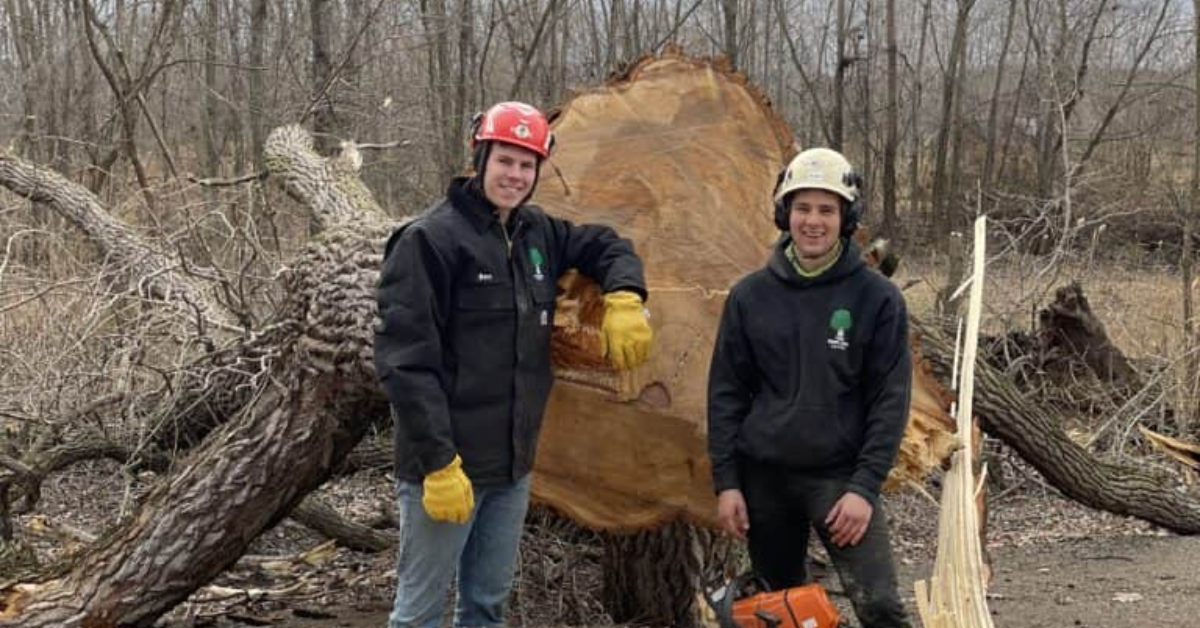Tree Removal: When, Why, and How to Do It Safely and Professionally
Trees are a valuable part of any landscape, offering shade, beauty, and a connection to nature. But when a tree becomes hazardous, diseased, or inconveniently placed, Tree Removal is often necessary. While it may seem like a drastic step, removing a tree can actually improve the safety, health, and functionality of your property.
Whether you’re dealing with storm damage, dying trees, or making room for new construction, this comprehensive guide to tree removal will help you understand when it’s time to remove a tree, what the process involves, and why hiring a professional matters.
When Is Tree Removal Necessary?
Removing a tree is usually a last resort, but there are several legitimate reasons to consider it.
1. Dead or Dying Trees
A dead tree poses a serious safety risk. Without living roots and limbs, it can easily collapse during high winds or storms.
2. Diseased or Infested Trees
Some tree diseases, like oak wilt or Dutch elm disease, spread quickly and can threaten nearby healthy trees. Infestations by pests like emerald ash borers can also warrant removal.
3. Storm Damage
Severe weather can split trunks or break large limbs, leaving trees unstable and dangerous.
4. Obstruction or Interference
Trees growing too close to homes, driveways, power lines, or underground utilities often need to be removed to prevent damage or allow for expansion.
5. Poor Location
Trees that were poorly planted (too close to structures or in compact soil) may become problematic over time as they grow.
6. Landscape Renovations
Sometimes tree removal is required to create space for new designs, outdoor structures, or gardening plans.
Risks of Avoiding Tree Removal
Ignoring a problem tree doesn’t make it go away—it usually makes the situation worse. Risks include:
-
Property damage from falling limbs or tree failure
-
Liability for injury if someone is harmed by the tree
-
Spread of disease to surrounding vegetation
-
Interference with construction or landscape upgrades
Being proactive protects your investment and the safety of those around you.
What’s Involved in the Tree Removal Process?
Professional tree removal involves more than just cutting a tree down. Here’s what a reputable service like Woods Forestry Solutions typically includes:
1. Initial Inspection
A certified arborist or tree expert assesses the tree’s health, structure, and location. They also identify any safety hazards or potential complications.
2. Permits and Regulations
Some cities require permits for tree removal, especially for heritage or protected trees. A professional service can help navigate this process.
3. Tree Cutting and Dismantling
Depending on the size and location of the tree, it may be removed in one piece or dismantled section by section using ropes, cranes, or bucket trucks.
4. Stump Grinding or Removal
You’ll often have the choice between grinding the stump below ground level or fully removing it, including roots.
5. Debris Cleanup
Reputable services remove all wood, branches, and sawdust unless you request to keep it for firewood or mulch.
Why You Should Hire a Professional Tree Removal Company
Tree removal is a dangerous job that requires experience, training, and the right equipment. Here’s why it’s best to hire certified professionals:
1. Safety First
Tree removal often involves working at heights and near power lines. Professionals use safety gear and advanced rigging techniques to prevent accidents.
2. Proper Equipment
Chainsaws, cranes, harnesses, and stump grinders aren’t tools most homeowners have or know how to use safely.
3. Insurance Coverage
A licensed and insured company protects you from liability in case of injury or property damage.
4. Efficiency
Experienced crews can complete a removal faster and with less disruption than a DIY attempt.
5. Site Protection
Professionals take steps to avoid damaging your lawn, home, or driveway during removal.
What Affects the Cost of Tree Removal?
Tree removal costs can vary widely depending on several factors:
-
Tree height and diameter: Taller or thicker trees are harder to remove.
-
Location: Trees near buildings or power lines require more care.
-
Tree condition: Dead or decayed trees can be more dangerous and complicated to remove.
-
Stump removal: Adding stump grinding increases the total cost.
-
Emergency service: Urgent removals, especially during storms, often come at a premium.
Always request a written quote before agreeing to a job, and make sure it includes clean-up and disposal fees.
Tree Removal vs. Tree Trimming: What’s the Difference?
While both involve cutting parts of a tree, they serve different purposes.
-
Tree Trimming is focused on improving the tree’s appearance, health, or safety by removing select branches.
-
Tree Removal is the complete elimination of the tree, usually due to risk, health, or space concerns.
If you’re unsure which you need, consult with a professional arborist for an evaluation.
Eco-Friendly Tree Removal Practices
At Woods Forestry Solutions, we strive to make tree removal as environmentally responsible as possible. Here’s how:
-
Wood recycling: Logs are repurposed into lumber, firewood, or mulch.
-
Minimal disturbance: We use low-impact equipment to protect nearby vegetation.
-
Replanting: We offer recommendations for new trees to replace those removed.
-
Local composting: Smaller branches and leaves are often composted for reuse.
Signs You Need Tree Removal
Here are some warning signs that a tree may need to be removed:
-
Deep cracks or splits in the trunk
-
Mushrooms or fungal growth at the base
-
Leaning trunk with exposed roots
-
Significant loss of leaves or bark
-
Large, dead branches in the canopy
-
Cavities or hollow areas in the trunk
If you notice any of these issues, it’s time to consult a tree removal expert.
Frequently Asked Questions (FAQ)
How long does tree removal take?
It depends on the size and complexity of the job. A small tree in an open area might take a few hours, while a large, close-to-structure tree could take a full day or more.
Is tree removal covered by homeowners insurance?
Sometimes. If a tree falls on your home due to a storm, removal may be covered. However, removing a dying or leaning tree as a preventive measure is typically not covered.
Can I remove a tree myself?
DIY tree removal is risky, especially for large or near-structure trees. It’s best to leave it to professionals with the right training and equipment.
Do I need a permit to remove a tree?
Many municipalities require a permit, particularly for mature or protected species. Your tree removal company can help navigate this process.
What happens to the stump after removal?
You can choose to leave the stump, grind it down, or fully remove it with root extraction. Grinding is the most common option due to its efficiency and minimal disturbance.
Final Thoughts
Tree removal is sometimes necessary to protect your property, safety, and landscape investment. Whether your tree is diseased, hazardous, or simply in the way, professional removal ensures the job is done safely and effectively.
At Woods Forestry Solutions, we’re committed to delivering high-quality, environmentally conscious tree services. Our trained experts handle every removal with care, from initial inspection to final clean-up.
If you’re facing a tree issue, don’t wait for it to become a bigger problem. Contact Woods Forestry Solutions today to schedule a consultation or request an estimate for your tree removal needs.







